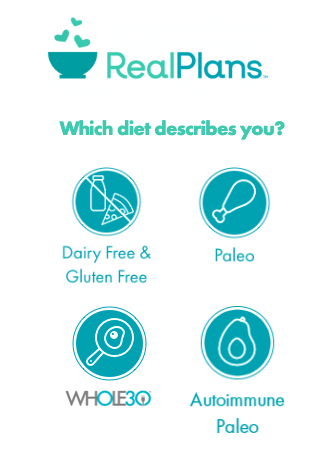Surviving social life on the AIP can be tricky … sorry … there’s no coconut-sugar coating this one.
Figuring out what’s safe to eat and how to politely convey your needs can be downright challenging. But having food allergies or intolerances doesn’t mean you have to miss out on the fun – or good food!
The first thing I want you to remember is that you’re not alone! Secondly, let me assure you that you don’t need to miss out or feel like a burden! There are so many tips and tricks on how you too can survive the holidays … or any other celebration or invitation where your AIP Lifestyle might be “challenged!” You’ve got this!
Preparation is Key!
Failing to Plan is Planning to Fail
Never were truer words spoken than these
… especially for those on the AIP!
Okay, let’s get this party started!
Know Your Why!
Take some time now to remind yourself what your WHY is … WHY are you on the AIP … WHY do you want to feel better? Establishing your health goals and a “dream board” or detailed visualization of what your life will look like when you achieve your health goals can be extremely powerful. Imagine how you’ll look and feel, the things you’ll see, smell, taste and enjoy experiencing once again. Having a firm resolve, or “WHY” in mind as you head into the season of temptation will help you to navigate the pitfalls with more resolve for sticking to your healthy intentions.
With that, you might want to consider this short article – “How to Set Goals, and Why You Should Write them Down,” or for a deeper dive, grab this book by Kelly McGonigal – “The Willpower Instinct – How Self-Control Works, Why It Matters and What You Can Do To Get More Of It.” – learn the power of “I Will, I Won’t, I Want!” and how to stress-less about it all – it’s fascinating, extremely practical and not too science-y!
Communicate With the Host & Be a Good Guest
Hand-in-hand with preparation is communication! If you’re on the AIP and you’ve been invited out, the first feeling is typically excitement, quickly followed by a wash of fear and panic … but I’ve got you, boo!
If you’ve been invited to an event at someone’s house you’ll need to communicate your food allergy or intolerance – it’s a must! Don’t be embarrassed or sheepish about it, food intolerances or avoidances are NOT unusual these days, BUT many people may be unfamiliar with exactly how to accommodate your needs and may unintentionally “gluten” you or incorporate an ingredient that isn’t ideal for your dietary needs – so communicate well and be a good guest.
Asking ahead of time what is on the menu and explaining exactly what you need to avoid can go a long way to helping both you and your host feel more comfortable. Chat with them about pitching in to help by offering to bring a dish or two that you know you can eat and that everyone will enjoy.
Plan for indulgent moments in advance with the host. Desserts on the AIP can be especially tricky, so opting for fresh fruit is a great way to go – it’s one of my favorite things to take to someone’s house as it won’t out-shine the meal and most people enjoy something light and refreshing. Want to make it even more irresistible? Try pairing your fruit platter with my favorite Avocado Carob Mousse … trust me, know one will know it’s not chocolate and that it has avocado in it!
If you need some recipe ideas, be sure to join my searchable Facebook Group!
Just Eat Real Food
I say this a lot, but the best bet for those with food sensitivities and allergies is to focus on the basics rather than having to dive in and scour ingredient lists to determine if something is safe for your needs or not.
Prioritizing nutrient-dense, real food can help stabilize energy and reduce the likelihood of overindulgence. Keep it simple by focusing on meats, simply cooked veggies, undressed salads (bring your own dressing), and healthy fats as a foundation. You will need to be mindful of seasonings, but I’ve got information about that below.
If you’re ever unsure what’s in a dish, politely pass on the option and if need-be simply mention you have food sensitivities and need to be extra mindful – that is typically enough to help avoid any hurt feelings from whomever made the dish. Remember, eating food you’re uncertain of isn’t worth the risk of triggering your allergy or intolerance and feeling downright rotten for days afterwards – your body will thank you for watching out for it.
Know What It’s Swimming In
If you’ve been on the AIP for any length of time, you know that watching the ingredients on seasonings, sauces, marinades and dressings is essential – and mind boggling! Gluten, refined sugars, soy, eggs and dairy lurk everywhere, and the dreaded “seasonings” descriptor in an ingredient list can mean a multitude of things!
Obviously you wouldn’t ask or expect the host to cater to your every need and check all of their spices and condiments so they suit your needs, but there’s no harm in asking that they “hold” the marinades and sauces in your case by keeping a portion of meat, veggies and salad aside for you. Offer to bring a homemade salad dressing that everyone can enjoy, and maybe a sauce to add flavor to your unmarinated/unseasoned meat and veg.
Don’t Show Up Hungry
Studies show that we make poor food choices when we’re hungry or tired, so be sure to get a good night’s rest and eat well-balanced meals or snacks before the big event – this can help stabilize blood sugar and you’ll be less likely to be tempted to indulge in something you might regret.
Bring “Back-Up”
If you know that options may be limited for snacks, appetizers and the main course, be sure to slip some AIP options in your pocket or purse that will travel well – things like AIP meat bars, packets of coconut butter, coconut chips, dried fruit or fat bombs will help keep your blood sugar stable – check out my big round up of snack options here – there are lots of pre-made AIP friendly options and coupons to help you get through.
Cheers!
One big question I get from new AIPers is, “what can I drink?” This can be an even bigger concern during the holidays or at social events, but let me assure you, you don’t have to feel out of place – there are lots of tasty options – you’re not stuck drinking water for the rest of your days!
Sparkling water with frozen blueberries is actually my favorite, but there are dozens of recipes for AIP mocktails and hot beverages posted in my searchable Facebook Group – be sure to check it out.
If you’ve always been a social drinker and are having a hard time in social situations where alcohol is on offer, I’ve dedicated a whole post about to the topic – “Do I Really Need To Give Up Alcohol?” – click here.
Can I Cheat … Just This Once?
This is another popular question … especially during the holiday season! Because it’s an FAQ, you guessed it, I have a dedicated post on that- check it out here.
Gave In To Temptation or Accidentally Ate Something Non-Compliant?
Don’t freak out! What ever you do, DO NOT stress about it! The effect of stress on the body can be worse than the actual item you ate (unless of course you’re actually allergic to the ingredient). Trust me, everyone slips up from time to time, whether you gave in to temptation, or by accident.
Now is the time to show yourself grace and self-compassion, be kind to yourself and move on. Be sure to drink plenty of water and enjoy a cup of ginger or peppermint tea to help your tummy. Simple practices like deep breathing or mindfulness to reduce stress post-indulgence.
In our family, a post-meal walk is often welcomed, and many people see it as a practical and socially acceptable way to aid digestion. If you’re feeling up to it, and you’re comfortable with the people you’re socializing with, maybe you can all stretch your legs and take a trip around the block!?
Over the next days, be sure to focus on nutrient density and gut healing foods like bone broth and soups that are gentle on digestion. Get plenty of rest and listen to you body.
Read more about this in my dedicated FAQ Post – “Glutened?”
Looking for tummy taming recipes – click this handy link to the search result for these recipes in my AIP Recipe Collection Facebook Group (you can also search there for “tummy tamer” or “under the weather”).
More Advice & Tips
DO NOT SKIP PAST THESE! The following posts are amazing articles written by some amazing people that will help you prepare to successfully navigate awkward/tough situations.
How to Really Eat AIP – Top tip from Angie Alt – “Don’t Be Weird!” This post is perfect to consider before you hit the holiday season – don’t let FFFEF stand in your way! Confused? … Trust me, just read this one!
Navigating The Holidays & Social Situations on a Healing Diet – Some of the best advice I’ve read about the topic – by Mickey Trescott.
Maintain Your Social Energy This Holiday Season – This one includes how to prepare your “Elevator Speech” – so you don’t have to be weird about your AIP lifestyle!
You Don’t Have to Apologize for Changing Your Diet – This is a very practical and helpful article that will help you prepare your mind for how to deal with the skepticism of friends and family.
10 Answers to the Question: Why Do You Eat That Way? – Eileen Laird provides some easy replies to this commonly asked question.
15 Tips for a Healthy Holiday Season – More practical tips from Eileen Laird of the Phoenix Helix
Getting Ready for the Holidays – Practical tips and tricks from AIP Coaches in the AIP Summit Podcast about preparing mentally and practically for food and emotional challenges that come with the holidays, food and family traditions.
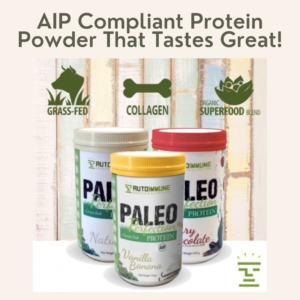 AIP Protein Powder!
AIP Protein Powder!
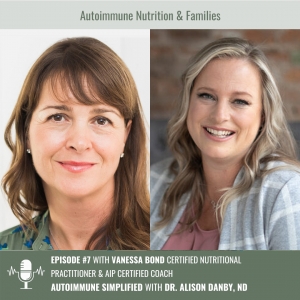


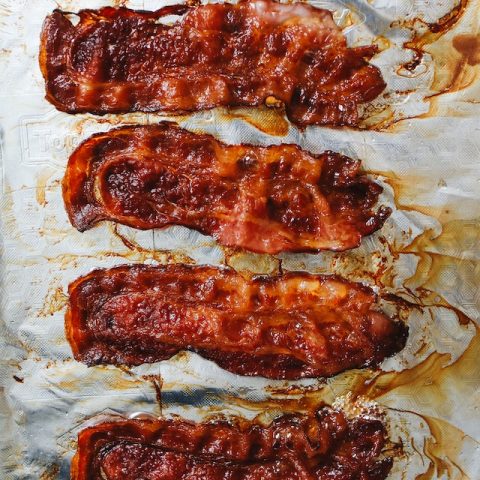
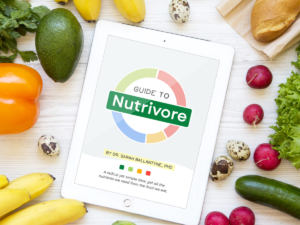

 THE ONLY SHOPPING LIST YOU’LL NEED!
THE ONLY SHOPPING LIST YOU’LL NEED!

